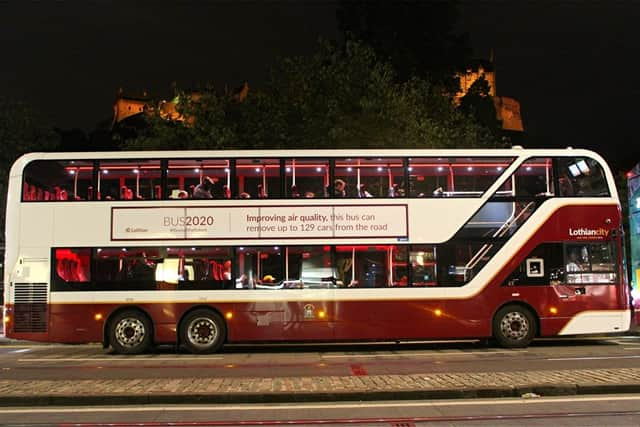Scotland's buses: Our most popular form of public transport should be allowed to beat the traffic – Alastair Dalton
Buses are under pressure from all sides, with falling passenger numbers, driver shortages, squeezes on support funding, and congested roads making them slow and unappealing. This has fuelled fare increases and service cuts, threatening to accelerate a spiral of decline.
But on the upside, buses have never been more comfortable and pleasant to travel in, with better seats, attractive lighting, wifi and charging sockets – as well as emission-free electric motors, contactless payment and more visible route numbers and destinations on the front, back and side of vehicles.
Advertisement
Hide AdAdvertisement
Hide AdBus travel across Scotland is also now free for under-22s as well as over-60s, meaning that, unbelievably, within a few years I’ll be able to join my teenage children in getting about for nothing and help boost the 300 million total annual journeys currently made.


However, as Catherine De Marco of First Bus, the main operator in Glasgow and Aberdeen, told that subterranean gathering, introducing bus priority measures so they could beat the traffic was the “fundamental” action needed to ensure reliable services and “decent journey speeds” – they currently average just 9mph.
She told Strathclyde Partnership for Transport’s “Call for Action” transport summit: “You can have a lovely bus, but no one’s going to want to take it if it takes them that long to get to where they need to go to.”
If there was a sense of gloom among some in the room, for me the person who put the bravest face on it was Fiona Doherty, managing director of Stagecoach West Scotland, which runs buses across the south west of the country. Although she reckoned congestion on some days was worse than ever, she pointed to improvements such as simplifying bus timetables – a major bugbear of mine in Glasgow – and fares.
Significantly, Doherty – who also chairs GlasGo Bus Alliance, a collaboration of the city’s operators to boost the sector – has the benefit of seeing it with a relatively fresh pair of eyes, having joined three years ago after working in airports, ports and the oil industry.
“I’m often struck by the fact we are reluctant to talk proudly about bus,” she observed. “We shouldn’t shy away from saying we do a lot of this really well. It’s the most flexible and adaptable form of public transport.”
Also championing the industry was Ralph Roberts, chief executive of fast-expanding Greenock-based operator McGill’s Buses, which has just taken over First Bus’s services in Stirling, Falkirk and West Lothian after buying Dundee’s main operator Xplore.
Roberts, who is also UK president of the Confederation of Passenger Transport bus and coach umbrella body, described buses as a crucial “bedrock” tied in with everything else in the economy, enabling people to get to work, study, healthcare and the shops.
Advertisement
Hide AdAdvertisement
Hide AdHowever, he said it had to be a mode of choice, not of last resort – and not just for those who can’t afford a car.
Taking that cue, I intend to travel more by bus – and coach – across Scotland, and will report back.
Comments
Want to join the conversation? Please or to comment on this article.